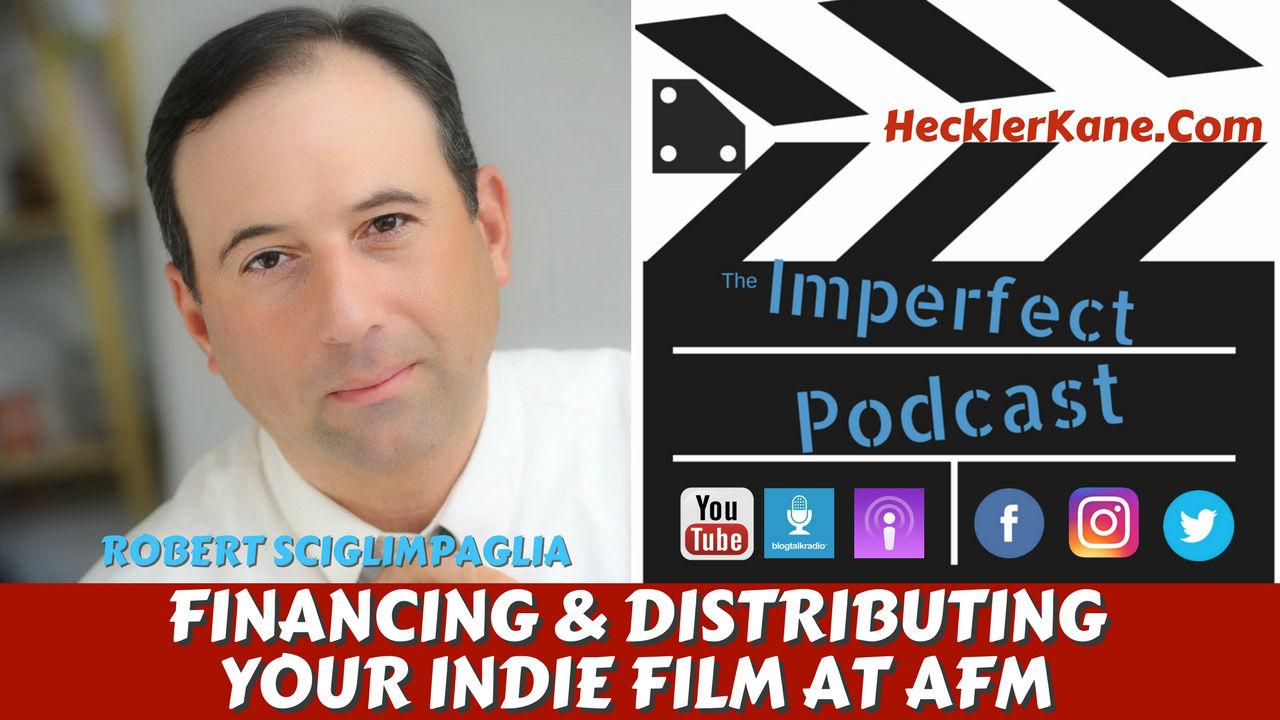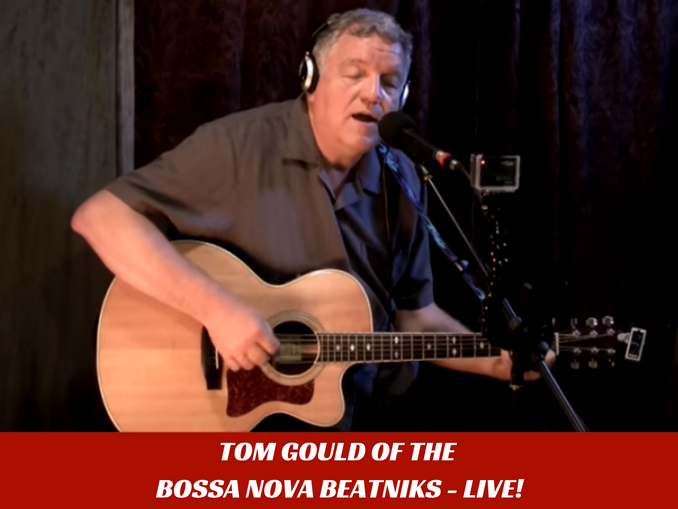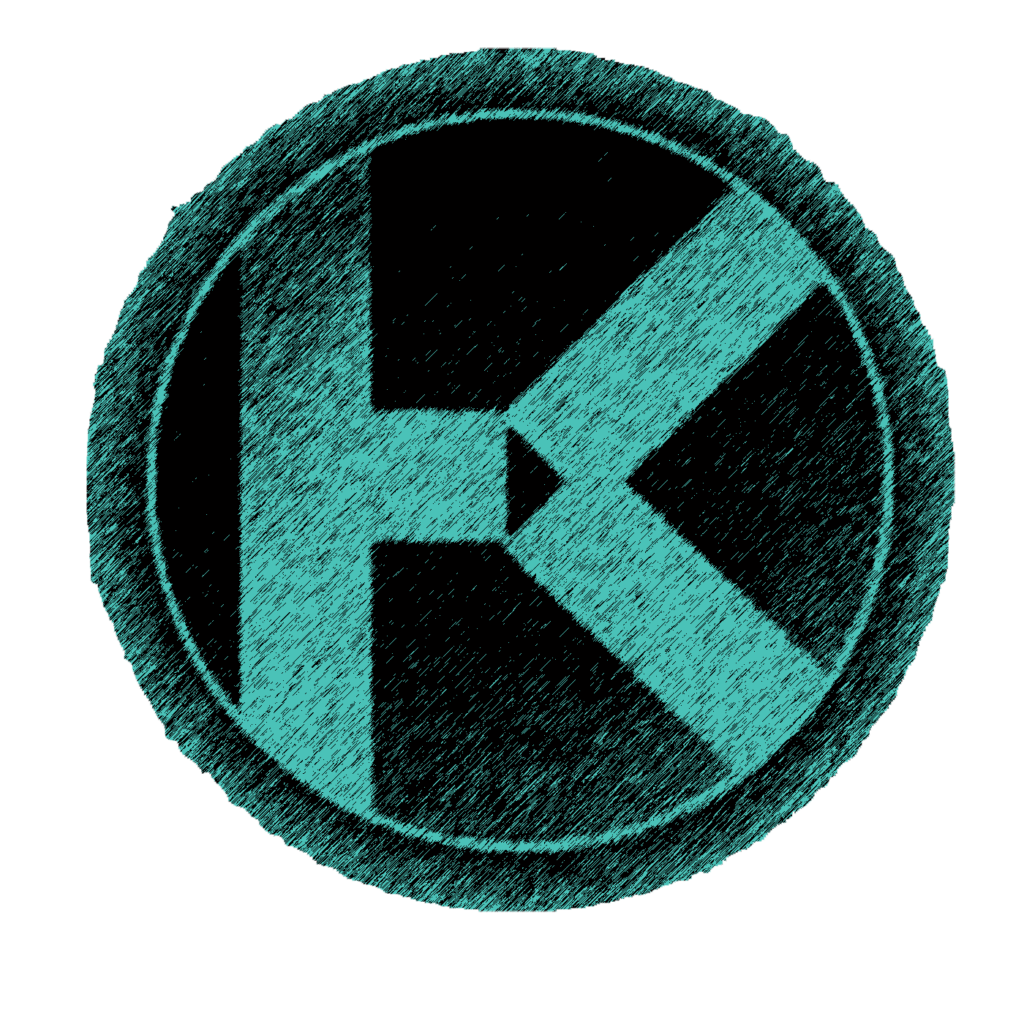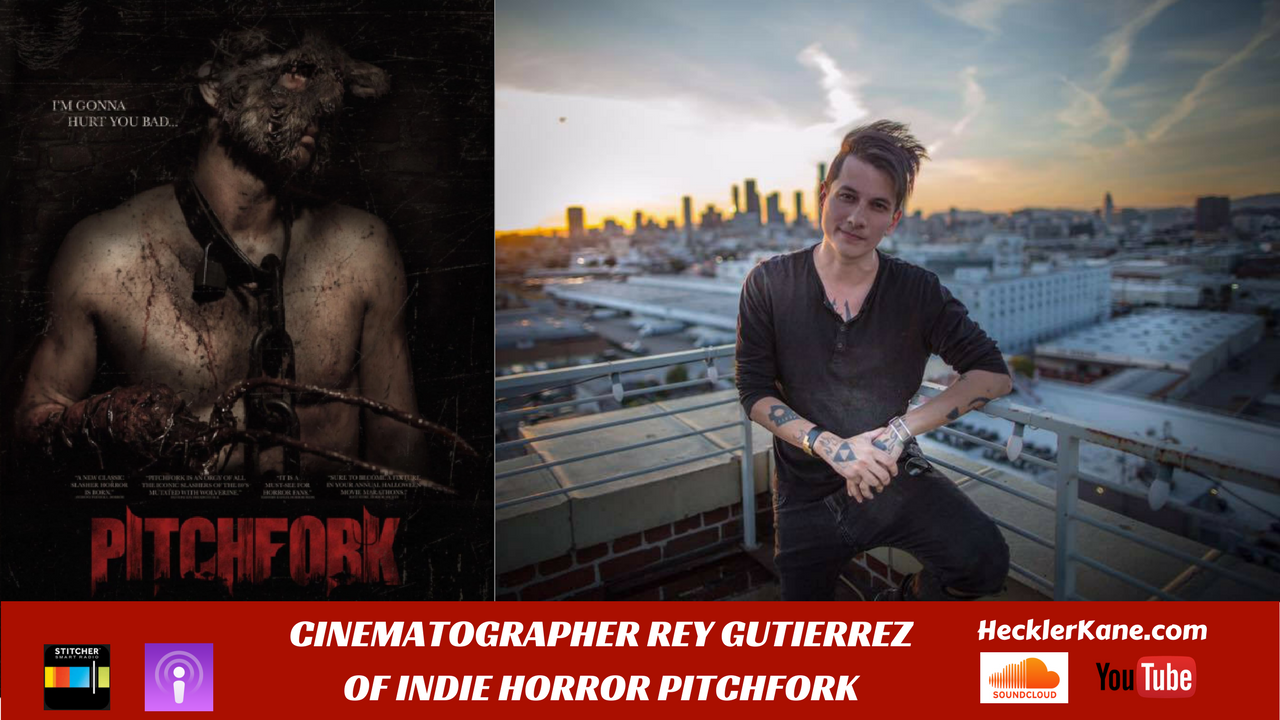I’ve been making films for the last year and a half. Pitchfork would officially be my first feature film but I’ve been slumming it as a commercial, music video director for the majority of my life. I started doing what I’m doing since I’m 14 and I’m 33 now. I grew up as an only kid. I’m an introvert. My grandmother adopted me and I grew up in Little Havana with my grandma.
I wasn’t much into hanging out and doing sports so I played a lot of video games and lived in my own little world of imaginary friends. I was obsessed with Power Rangers and Godzilla and dudes in suits and watching Teenage Mutant Ninja Turtles. I wanted to create that. I remember watching Power Rangers and recreating my own episodes with my own toys and having a blast by myself.
Then I was a theater kid, a drama kid and stage nerd. I jumped into video production very early on in high school. Luckily I was part of an amazing program in Miami Senior High School. It was the art tech program run by Joe Underwood. He was basically the first man in my life that kicked my ass and said, “Dude you’ve got something special. You hate school and skip class to the TV studio and you’re creating awesome shit for the morning announcements. You’re running around with camera work and you’re really inspiring your friends and other students. You’re onto something.”
Just because I’m a Latino and because I was raised a certain way doesn’t mean I’m going to be this person. I’m going to be bigger than that. I grew up watching Full House thinking I want that life!Where’s my Uncle Jesse dammit? I want his hair! To live in San Francisco and to have that reality now I’m like hell yeah! I just need my Uncle Jesse.
My rebellious attitude always opened doors for me before I barely graduated from high school with a 2.1 GPA. My professor was good friends with a casting director. His name was Ed Arenas from Unique Casting. He’s famous for Any Given Sunday, Bad Boys 2 and Pirates of the Caribbean and hundreds of music videos and national ads. He needed someone to cut a quick sizzle reel for a gift basket at some premiere. That’s how him and I connected and he hired me on the spot.
For 2 long years I was making $250 for every two weeks but I had access to music videos and Oliver Stone and I got to be on the set of Bad Boys 2. I got this immersive experience of what making a movie or running a casting agency is like. The behind the scenes, sex, drugs and rock-n-roll that nobody talks about, that was my career. I’m glad I had access to that very early on.
Unfortunately at that moment my grandmother passed away, the woman who raised me. She willed the house I grew up in to me and I finished paying it off. I spent a majority of my early 20’s just exploring music, music videos and falling in love with the Joseph Kahn’s, with what MTV was back in the 90s and having that certain look.
I grew up playing PlayStation. I grew up playing Super Nintendo. While my friends were playing Super Mario, I was playing Out of This World. While my friends were playing Final Fantasy I was playing Metal Gear Solid. I wanted a story. After playing Halo I would obsess over the making of Halo. I would be so obsessed with God of War and how they made it. Then fast forward and somehow find myself living the dream and having this Playstation tattoo. I spent five years of my life at PlayStation seeing how the sausage is made there. Now I knew what the dark side of making a game is.
It was very appropriate to graduate from this dream reality I had built myself and say alright I think I’m ready to make a movie. I told myself I don’t want to shoot it on a Red. I don’t want to shoot on these fancy cameras. I don’t need a full crew. I just want to be able to shoot this movie like I shot it if I were a kid back in my bedroom. I want to be able to be flexible and move quickly and at the same time learn what it’s like to be part of a crew. I’m very prideful about being a loner and doing these projects on my own.
That’s what I’m really proud of Pitchfork for. It’s always been in my DNA. I’m still the same kid that plays with his Power Rangers and obsesses about Full House. It’s just scaled to a bigger level.
[bctt tweet=”It’s not a bigger crew, money or cameras. It’s just heart, ambition, passion and drive that motivate me.” username=”hecklerkaneinc”]
As a loner what is your relationship like with director Glenn Packard?
There are two types of directors. There are directors who understand the technicalities of how to get a shot done and then there’s directors who say I want this and then magically a team surrounds that vision and build that shot. Glenn is very much the creative director when it comes to Pitchfork. He had a vision for what Pitchfork was.
What was amazing about how we collaborated is that he knows I love music video and he knows I love theater. We never story boarded it. He said these are the sets, locations and structure of the script. Then I started painting and vibing the space, plotting out a ballpark scenario of where shots should be. None of the shots were throwaway shots like most horror films do these days which.
This person was walking in from the right to the left for a reason, there’s an establishing shot. These shots matter to me. He basically said, “Rey play” and that’s what I did. My job is to say this is what it’s going to feel like in the lense but at the same time I like to fill the lense with as much as I can. I want a nice beautiful shot which is why even at night there’s some sort of light breaking the shot. There’s some sort of activity.
[bctt tweet=”You don’t watch horror movies to see reality. You watch a movie to escape reality. ” username=”hecklerkaneinc”]
There’s a couple of shots I nudged in and directed. One of my favorite shots is the Spieldberg minute where Pitchfork is outside the door and the camera slowly pans and sits on the two windows and the two actors just play. The scene is playing in front of us. There’s no cutaways and the camera pans right back to Pitchfork and he’s been standing there the entire time.
What was the location for Pitchfork?
I like to call this film an autobiography. We shot this film where Glenn grew up. This is the Packard farm. These were all real sets.
How did you get the opening shot for the film?
I take a lot of pride in that shot because I call that a fuck you shot. That’s me setting the tone for the film. If I don’t capture you in the first shot then I’ve lost you. It was actually a drone shot played backwards. I flew the drone backwards and on the third take I crashed it.
How important was the animalistic symbolism in the film?
When it comes to the creative aspect of Daniel and his performance of Pitchfork I would lean on Glenn for that because that was his vision. He always had the vision of what the barbwire around the wrists should look like. The character was envisioned ten years ago. If it becomes a trilogy its essentially going to be the Packard autobiography.
When it comes to Pitchfork in the frame I always had this black and white battle. There’s a lot of shots where I always envisioned Pitchfork as a wolverine, more menacing always crouching. I always thought he looked weak when he was just standing up as a man. I always leaned towards the more visceral animalistic nature of the movie.
Even stylistically when it’s about the humans I always shot that very clean and locked off, very pretty and vibrant. It was supposed to make you feel good. If you watch the movie on mute you can still tell stylistically what’s happening on screen. That to me is a huge win.
Every time there was a Pitchfork scene I had the camera hand held. I was always with him. A good example of that is the cornfield scene. Being one of the darkest days shooting it was a complete disaster. I grabbed our six lights and created a road map around this cornfield. We had two massive construction lights we used as moon lighting set back a mile or two away that we enhanced with some Party City fog.
Every time I would lock in with Pitchfork we would be this animal. At that point in the cornfield we were one. That’s where the movie production started to turn dark. We actually shot the film chronologically. It took 30 days to film Pitchfork. That half way point I shut off and stopped talking to people. I started going dark and I think it actually helped the film. You can see how I treat the camera and treat Pitchfork when I locked in with the camera.
What camera did you shoot Pitchfork on?
That was just a Sony a7s with a rig to a Shogun. I primarily used Zeiss lenses. I was bouncing between a 35 and 85. When I would call out lenses I would primarily call give me the wide, give me the prime, give me the 35. That’s what I pride myself in. I set my rules and discipline myself. Only six lights. I want you to be able to remove my air, my food and my oxygen and if I can still survive I can shoot this thing. In those opening shots as a director of photography, I wanted to people to really say is this an independent film?
All the equipment was under $15,000. I did it for free because I was a partner in the film. I quit my dream job at PlayStation to shoot this movie. I put my heart and soul into this film. I remember watching the premiere of the film drunk because I was afraid of what I was about to see. The first time I watched it in my home I truly enjoyed it for what it was.
I love the guys with the big cameras. I love the big toys but I’m like just give me an iPhone. My big protest to all these YouTube creators that are doing these amazing things but they’re blowing all this money on all this gear. They don’t need to do that. You can be storytellers and do these amazing things and they’re not and it drives me insane.
I take every opportunity I can especially working at Patreon. I want to inspire as many creators as I can and tell them you don’t need the big Hollywood guys. You don’t need some dude in San Francisco with VC money to say make me more money. You can make this on your own. All you need is some drive and passion with the right attitude and confidence channeled in the right spot at the right time.
How did you connect with Glenn and leave your dream job at Playstation?
I’ve known Glenn for close to 10 years. Him and I met back in Miami when I was living out there. I was 195lbs, I let myself go. I was in my early 20’s. I had my house, I was making cool shit living the life. I just didn’t care. When I met Glenn he gave me a reality check.
“Rey you have the ability to do these music videos with me, you have access to these amazing dancers, choreographers and producers. All you have to do is flip the switch and get in gear and be hungry again.”
One of our first projects, The Knockouts, is a live theater burlesque show at the racetrack in Fort Lauderdale. We met at the right time. He was leaving the world of choreography and diving into the world of directing music videos. This is why the movie looks so pretty beyond the shot. The talent glows because Glenn has quietly been casting this film for 10 plus years.
He’s always had me in his back pocket waiting for the right moment to shoot this film. The moment he said Rey it’s time to shoot this movie it happened and I knew I needed to leave everything. As much as I loved Playstation, I felt that energy I felt way back when I first met him and said we could do this. It was exactly what I needed. Shooting this movie was a step in the right direction for my career.
Tell us about the dance scene in Pitchfork
It was much shorter in the original cut and I love the extended version. We shot that entire scene in one night. I’m pretty sure the reason I lost most of my hair was from that night. I know what Glenn was trying to do. He was trying to flex his choreography muscles and all we got was this one shot up, down, left, right. I wish we had a little more time to really dive in there.
I almost feel the reason why people are liking or disliking this scene because it feels out of place because it’s shot out of place on purpose. It feels so abrupt because it was always planned to be this vignette of sorts. Because of music licensing the scene constantly changed. Unfortunately the pure vision of what Glenn wanted had to change.
It serves its purpose for fans that immediately get what we were trying to accomplish. It’s a little wink and a nod and if you’re still with us then the real treat happens. We start chopping these people’s heads off. If you start to dislike these characters then it’s working.
Are you a horror movie fan?
I’m lucky enough to remember the good parts of the 80’s and 90’s. I always thought any movie in the 80’s and 90’s was a horror movie. If you look at Terminator 2 compared to whatever Terminator there is today, these films oozed with flavor the way they were shot. Even Bill Nye the Science Guy. His director of photography is better than anything on PBS today. There was so much love put into every frame back then. Today everything is so sterile and PG.
Was Pitchfork more PG than it needed to be for a horror?
That was all Glenn’s call and more power to him. He totally Will Smith’d the shit out of this movie. When Pitchfork is going at it and there’s blood splattering, that original shot was just Pitchfork doing something. I had to tell Glenn, just more blood, let me have it! That was the only time he started to let go.
I kind of appreciate the fact that for a horror film it’s pretty clean and not bloody. It’s just the right amount of blood. The only thing that was post was a lot of the effects, a lot of the blood splatter, a lot of the foley of course. Most of the stuff you see is clever light placement, clever covering of a fixture with an elbow. It’s all silly theater tricks I taught myself when I was a kid.
Download the episode on iTunes & Soundcloud to hear Rey Gutierrez talk more about lighting for Pitchfork.
How important was the music for Pitchfork?
This is a great question to end on. Christie Beu did an amazing job with the soundtrack. Christie and Glenn and Beu sisters have been friends for a lot longer than Glenn and I have been. They met through his relationships with Disney. Again, he called up an old friend and pulled a favor. He created great moments through music and that really helped move the scenes along. I think she did an amazing job. Ironically enough I was pumped to do the score to Pitchfork.
I’ve been working on this other project called Murder Palace that is essentially my Pitchfork. My dream baby. I wanted to start teasing Murder Palace into Pitchfork. The original vision as I was shooting this was well I’m going to let this scene play out because here I’m going to have music that goes this way. I was essentially writing the score while shooting it. In many ways it was very painful to just see me let the film go. It took me 4 months of falling in and out of love with this film.
Glenn was so patiently waiting for me to give him a rough cut and refused to have him sitting by my side. Him and I slept in the same bed for 30 days and 30 nights. Imagine having the worst and best relationship and then having the biggest fight and then having to go to bed with this person and you can’t fall asleep because you either had a fantastic or awful shoot. In many ways it was a necessary evil. I had to walk away from the film for about 30 days. About 3 months later I delivered the rough edit and couldn’t even imagine jumping in to do the soundtrack at that point.
What I know now is that I shot a movie with nothing. Maybe they don’t need to be 90 minute films. They can be 10 minute films. I can shoot them like Pitchfork and put them on my Patreon page and have episodic content under the Murder Palace name. If a music video and Black Mirror had a baby that’s what Murder Palace is.




